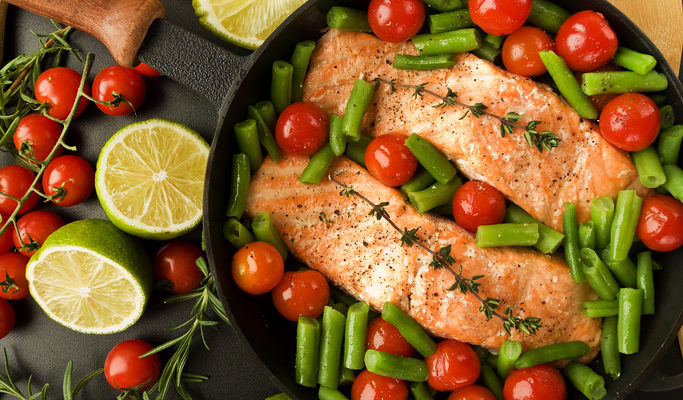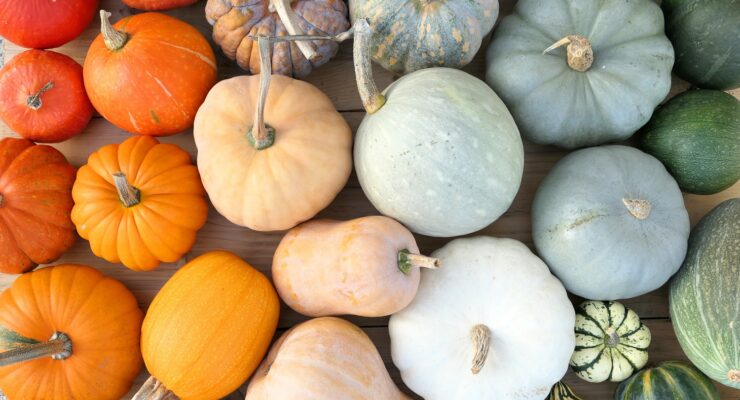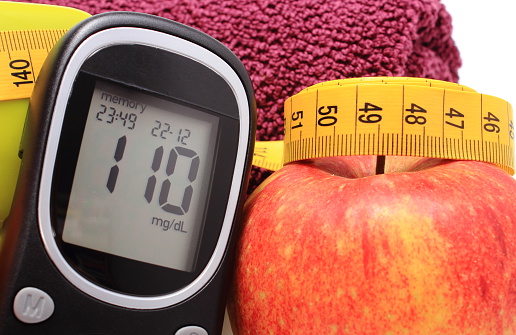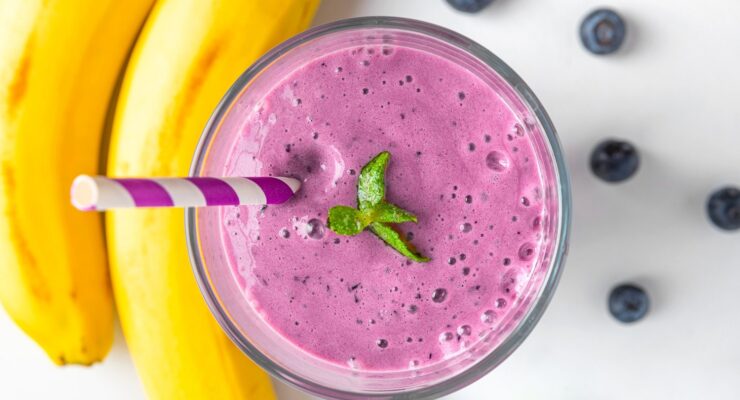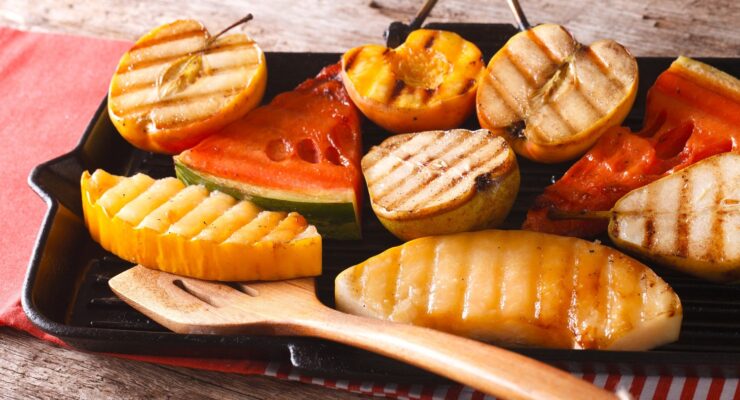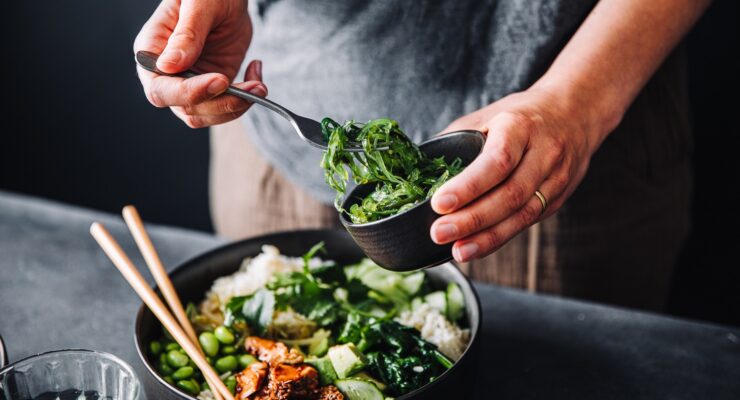10 Foods Beneficial for Diabetes
Article posted in: Diet & Nutrition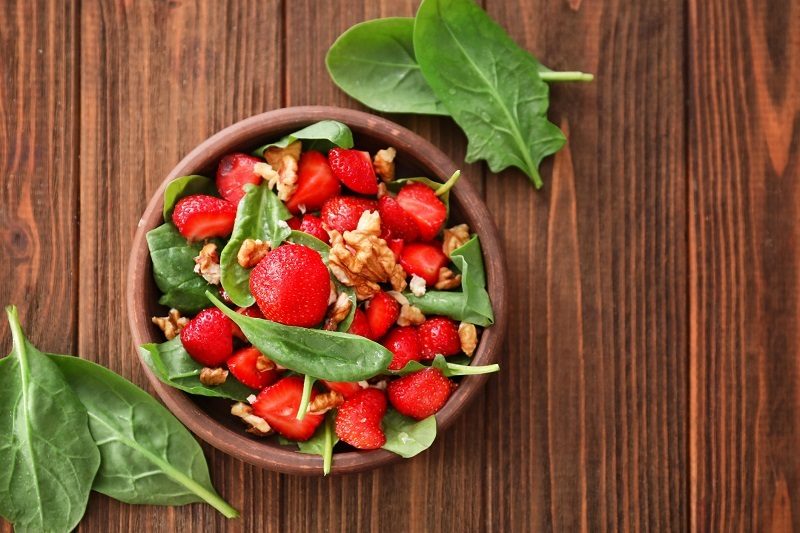
If you have diabetes, you probably hear a lot about the foods that you shouldn’t eat. What you really need to know is what you should eat. We’re here to help and have compiled a list of food options for diabetes. These 10 ingredients are not only healthy but have been shown to help control diabetes and reduce its symptoms. Best of all, there are many delicious options that are sure to satisfy any appetite!
Here are 10 foods that are beneficial for those with diabetes:
1. Eggs

Nutrisystem category: PowerFuel
Serving size: 1 large egg
Tip: Eat whole eggs rather than just the whites. Most of the beneficial nutrients are in the yolks, says Healthline.
Start your morning with protein-rich eggs. According to the United States Department of Agriculture (USDA), one large egg contains only 72 calories and 6 grams of protein. You may have heard that eating eggs raises cholesterol levels. However, current research has found that eggs increase HDL (high-density lipoprotein), the good kind of cholesterol, and reduce LDL (low-density lipoprotein), the destructive kind. In fact, a study, published in the British Journal of Nutrition, found that eating eggs “improves blood lipid and blood glucose profiles in individuals with type 2 diabetes.” Eggs are a low-calorie way to fuel your day and a great food for diabetes.
2. Greek Yogurt

Nutrisystem category: PowerFuel
Serving size: ½ cup- ¾ cup
Tip: Avoid varieties high in added sugars and choose nonfat, plain Greek yogurt.
Smooth and creamy yogurt can be the base for a satisfying meal or snack. Compared to conventional yogurt, Greek yogurt is thicker in texture and higher in protein. Most standard single-serve Greek yogurts contain 5.3 ounces, which is about half a cup. The calories typically range from 80 to 90 calories with about 14 to 15 grams of protein. More protein means that you will stay full and energized for longer. The American Journal of Clinical Nutrition reports that eating yogurt improved blood sugar control in patients with Type 2 diabetes.
Greek yogurt is a staple in many recipes. Enjoy it in this No-Bake Strawberry Pie Parfait >
3. Salmon

Nutrisystem category: PowerFuel
Serving size: 2 ounces
Tip: Fresh and frozen salmon are both delicious. If on a budget, try to find frozen fillets! They are typically cheaper and still tasty.
Salmon is a versatile ingredient, containing only 90 calories and 15 grams of protein per serving says the USDA. Along with other fatty fish, salmon is rich in both protein and heart-healthy omega-3 fatty acids. Penn Medicine states that omega-3 fatty acids have been shown to lower triglyceride levels and blood pressure. They work by protecting the cells that line your blood vessels, reducing inflammation which is a common symptom of diabetes. Fish oils improve “arterial compliance in non-insulin-dependent diabetes,” according to a study, published in the peer-reviewed journal Arteriosclerosis, Thrombosis, and Vascular Biology.
4. Nuts

Nutrisystem category: PowerFuel
Serving size: 2 tablespoons or ½ ounce
Tip: Choose dry-roasted, unsalted nuts. They are free of added fats and sodium.
Nuts are potent packets of nutrients and a beneficial food for diabetes. They’re loaded with protein and healthy mono-unsaturated fats. According to the USDA, a serving of peanuts has 85 calories and 3.5 grams of protein. The peer-reviewed journal, Nutrients, indicates that eating nuts has been shown to potentially benefit blood sugar control. Another study published in Nutrition, Metabolism & Cardiovascular Diseases, found that diabetic patients who regularly consume nuts have a reduced risk of cardiovascular diseases.
Not sure how many nuts you should eat? Find out here >
5. Strawberries

Nutrisystem category: SmartCarb
Serving size: 1 cup
Tip: Frozen strawberries are perfect for smoothies and typically cheaper than fresh.
The sweet and juicy strawberry is a tasty addition to breakfasts and snacks. They are low in calories, high in fiber and lower in sugar when compared to other fruits. The USDA indicates that one cup of strawberries contains 46 calories and 2.9 grams of fiber. Even better, strawberries are rich in anthocyanin, an antioxidant that gives them their bright red color. A study, published in the British Journal of Nutrition, found that anthocyanin helps to limit inflammation and insulin production in diabetes patients after eating.
6. Leafy Greens

Nutrisystem category: Vegetable
Serving size: 1 cup raw, ½ cup cooked
Tip: Throw fresh leafy greens into smoothies, eat them in a salad or cook them with your favorite entree.
Spinach, kale and other leafy green vegetables are among the healthiest foods you can eat. They are high in vitamins and minerals yet low in calories. Leafy greens are non-starchy vegetables that are high in fiber. These types of veggies also supply you with carotenoids (plant pigments), such as lutein and beta-carotene says the peer-reviewed journal, Biomedical and Environmental Sciences. Carotenoids may be associated with a lower risk of cancer. A study, published in the British Journal of Nutrition, also shows that consumption of certain carotenoids, including lutein, prevents the development of age-related macular degeneration.
Enjoy the power of leafy greens in Nutrisystem meals. Taste our Spinach and Cheese Pretzel Melt >
7. Squash

Nutrisystem category: SmartCarb
Serving size: 1 cup cooked
Tip: Swap pasta with spiralized butternut squash for a low carb alternative.
The squash family is large and diverse. Acorn, butternut and other winter squashes are full of fiber and other valuable nutrients. A serving of cubed and baked butternut squash has just 82 calories and 6.6 grams of fiber says the USDA. They are a great food option for diabetes. According to the Harvard T.H. Chan School of Public Health, squash and their seeds have a low glycemic index and may help control blood sugar levels.
8. Garlic

Nutrisystem category: Free Food
Serving size: Unlimited
Tip: Invest in a garlic press if you enjoy fresh garlic cloves or stick with dried garlic powder.
The zesty flavor of garlic is a favorite in many households. Garlic provides a wide variety of health benefits, including several that may help people with diabetes. The peer-reviewed journal, Food & Nutrition Research, found that garlic improved blood sugar control in those with Type 2 diabetes. It also had positive effects on cholesterol levels. A study, published in Maturitas, found that diabetes patients experienced decreased blood pressure when they consumed aged garlic daily for 12 weeks.
If you’ve never cooked with fresh garlic before, we’re here to help! Learn how to peel garlic easily >
9. Cinnamon

Nutrisystem category: Free Food
Serving size: Unlimited
Tip: Sprinkle cinnamon in smoothies and on fresh fruit for a low-calorie way to add flavor.
This fragrant spice brings a sweet flavor to oatmeal, smoothies, coffee and desserts without raising blood sugar levels. This makes cinnamon an ideal spice and food for diabetes. A study, published in Nutrition Research, found that cinnamon can help to improve blood sugar control in those with Type 2 diabetes. Another study, published in Diabetic Medicine, indicates that regular intake of cinnamon significantly reduced Hemoglobin A1C (HbA1c) and blood pressure among 58 patients with Type 2 diabetes. Cinnamon is low in calories and considered a Free Food on the Nutrisystem program, so feel free to spice it up!
10. Flax Seeds

Nutrisystem category: Extra
Serving size: 1 teaspoon
Tip: You can buy whole flax seeds and grind them yourself or use a ground flax meal to save time. Cold-pressed flaxseed oil is also great for salad dressings!
Add just a teaspoon of flax seed to yogurt, salads, wraps or smoothies for a dose of healthy fats and fiber. They have a light and nutty flavor that is perfect for both sweet and savory dishes. A study, published in PLOS One, found that the tiny seeds are rich in lignan, a micronutrient that has been shown to keep blood sugar levels balanced after eating.

